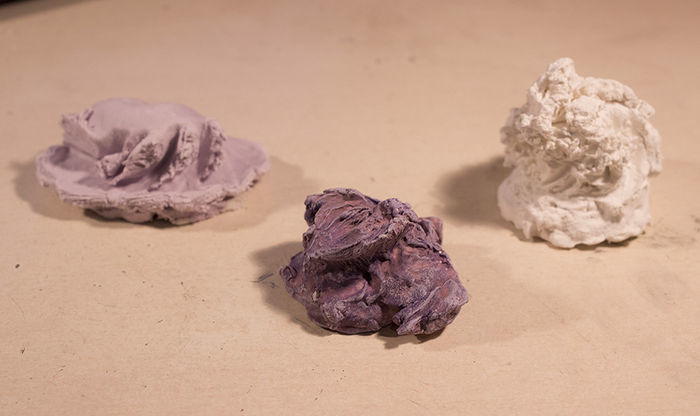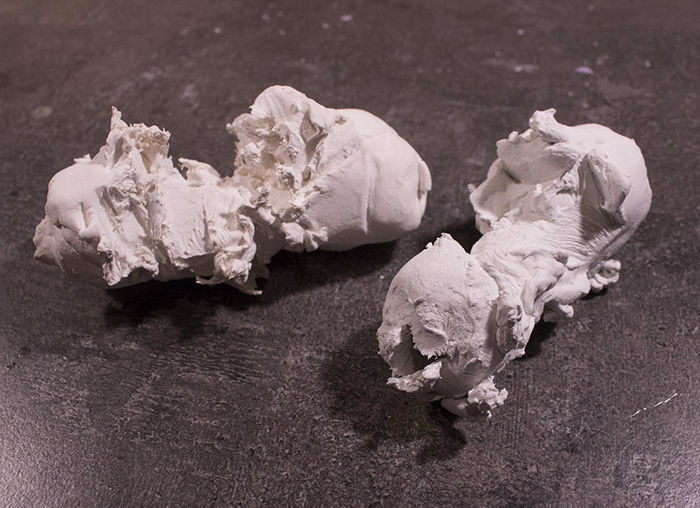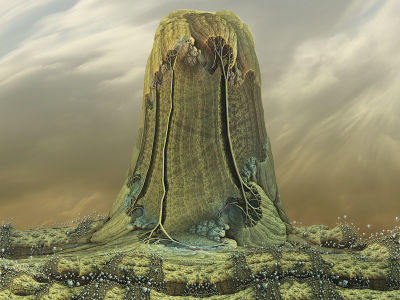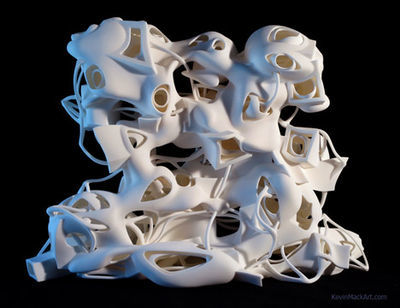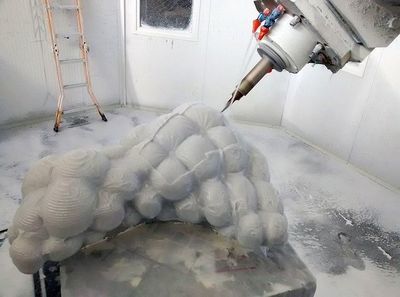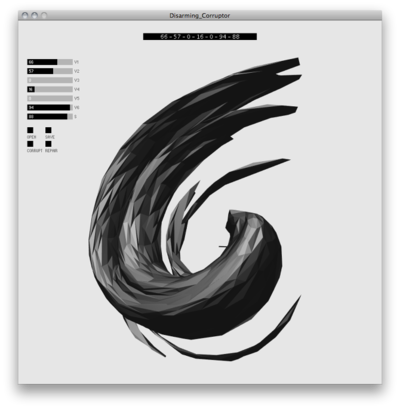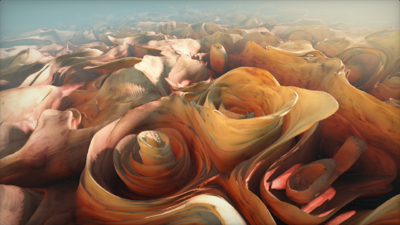Difference between revisions of "User:TimDemper/Tools of the trade"
| Line 108: | Line 108: | ||
https://www.shadertoy.com/<br> | https://www.shadertoy.com/<br> | ||
| − | Alleen formules te nietszeggend? op andere manieren laten onstaan (meerdere objecten bij elkaar zetten en regels geven). | + | Alleen formules te nietszeggend? op andere manieren laten onstaan (meerdere objecten bij elkaar zetten en regels geven).<br> |
| − | https://developer.cdn.mozilla.net/media/uploads/demos/g/u/guska076/1f2b2abce4f159de89108615cd77349c/implicit-equation-3d_1371322341_demo_package/index.html | + | 3d formules:https://developer.cdn.mozilla.net/media/uploads/demos/g/u/guska076/1f2b2abce4f159de89108615cd77349c/implicit-equation-3d_1371322341_demo_package/index.html<br> |
| − | cnc klei handig want: objecten kunnen nog bewerkt worden na het creeren van de machine, kunnen gecombineerd worden, vervormd worden, alleen als textuur gebruikt worden enz... | + | cnc klei handig want: objecten kunnen nog bewerkt worden na het creeren van de machine, kunnen gecombineerd worden, vervormd worden, alleen als textuur gebruikt worden enz...<br> |
| − | http://www.scientias.nl/fibonacci-in-de-natuur/ | + | |
| + | wiskunde in natuur: http://www.scientias.nl/fibonacci-in-de-natuur/<br> | ||
schaal:<br> | schaal:<br> | ||
Revision as of 00:19, 8 December 2015
Tools of the trade
I want to create a tool where I can generate actual physical objects with. The tool could be very simple (at first). For example: A sculpting tool rotating in a certain pattern. You can hold It with a piece of clay to generate a certain structure. Or materials that generate a structure of it’s own (for example pu foam or hot glue). Or something generated in software and 3d printed (probably don’t want to do that). And many more ways to generate physical object I could do research on. It’s probably the most interesting to use combination of a few ways to generate objects. For example: droppings drops of purr foam on an object, in kind of cnc machine, the pattern could be generated by software. The data of the generated object could be a mathematical algorithm, maybe mixed with some randomness (code generated randomness or influenced by imperfections of the building process). Or data from sensor input.
I want to create generated art, because i'm interested in different realities. The endless possibilities of unknown realities that may or may not exists. Almost everything that exists can be calculated or modeled by mathematical formulas and rules. Some aren't discovered yet or are too complex for us. If I want to create a new kind of nature I can backwards reason by using different kind of formulas and rules, and creating a new world of those formulas or rules. By generating art by a specific set of rules there will arise new kinds of objects and structures, that are hard to imagine.
I already created some generated artwork, but want to develop this further and create tools that can help me generating artworks. I will experiment with both a software and hardware. A software only generated object (can be 2d, 3d, and possibly 3d printed) can be much more complex, and hasn't the limitations that the material you will make the object from has. The interesting part about generating the artworks with hardware is that you instantly have a physical object. Also the imperfections and structures of the material can make the objects more interesting. Or the special properties of certain materials. For example the expanding of foam, melting/collapsing of styrofoam.
experiments
First I wanted to experiment with a hardware solution for generating objects. It has 3 servo's controlled by a arduino and can create very primitive shapes. The objects where also very chaotic, because the clay crumbled a lot. These imperfections were a nice addition, since it gave them a more natural look, almost like weird shaped rocks. But the shapes weren't all that interesting but they might become more complex if I use more servo's different kinds of tools on them or a completely different approach. Looking at the machine and how the objects are made is a lot more interesting than the actual objects it creates. Especially if the tool becomes very complex and the servo's are painted. It will then be a (scale model) of a factory where new kinds of generated shapes are created.
A video of the first experiment:
I used a stepper motor and the servo from the previous experiment to create something closer to the idea I have for the final machine. There should be 2 different sculpting tools (I have to experiment what tools works best or give the most interesting results).
A video of the second experiment:
TODO: maybe use input data from a source to generate the object. The source could be for example from sensors of the room the machine is in, or user input. Or it could be data from the internet. processing power from pc, arduino due or raspberi pi for more complex formulas? (if needed)
Research/inspiration
An alternative world or object can be created by using fractals. They are generated by using only a set of mathematical rules.
3d mandelbrot
3d landscape like fractal
These are digitally generated using different algorithms, and digitally edited afterwards. Then they are fabricated with a 3d printer. It may be a good idea to edit the generated objects by hand or make them part of a bigger structure, as the clay material is easy to edit afterwards and you can get more interesting structures. By copying and getting inspired by the strucure of the generated object the object is still semi generated.
http://www.kevinmackart.com/sculpture.html
Objects generated using input data:
generated from a painting of a sheep:
generated by modifing the vertexes of a 3d model
Generated using a pixel shader:
custom cnc machines:
https://www.youtube.com/watch?v=s_W0cPu5Gqs
https://www.youtube.com/watch?v=Z0vQIaUZGu4
custom 3d printer:
https://www.youtube.com/watch?v=snOErpOP5Xk
other:
Traveler(generated video):
http://notnot.home.xs4all.nl/ima/ima_youtube.html
Modified Julia fractal
https://en.wikipedia.org/wiki/Computer_art
Mathematics and art:
https://en.wikipedia.org/wiki/Mathematics_and_art
Superformula for making natural shapes:
https://en.wikipedia.org/wiki/Superformula
nodebox program for generating art:
https://www.nodebox.net/code/index.php/Superfolia
Evolution art
https://en.wikipedia.org/wiki/Evolutionary_art
Algorithmic/generated art
https://en.wikipedia.org/wiki/Algorithmic_art
https://en.wikipedia.org/wiki/Generative_art
Shader generated art:
https://www.shadertoy.com/
Alleen formules te nietszeggend? op andere manieren laten onstaan (meerdere objecten bij elkaar zetten en regels geven).
3d formules:https://developer.cdn.mozilla.net/media/uploads/demos/g/u/guska076/1f2b2abce4f159de89108615cd77349c/implicit-equation-3d_1371322341_demo_package/index.html
cnc klei handig want: objecten kunnen nog bewerkt worden na het creeren van de machine, kunnen gecombineerd worden, vervormd worden, alleen als textuur gebruikt worden enz...
wiskunde in natuur: http://www.scientias.nl/fibonacci-in-de-natuur/
schaal:
http://htwins.net/scale2/index.html
power of tens:
https://www.youtube.com/watch?v=0fKBhvDjuy0
The Universe in a Nutshell:
https://www.youtube.com/watch?v=0NbBjNiw4tk
Multiverse
https://www.youtube.com/watch?v=Ywn2Lz5zmYg
Dimensions
https://www.youtube.com/watch?v=p4Gotl9vRGs
parallel universes
http://www.pbs.org/wgbh/nova/blogs/physics/2012/11/a-guide-to-different-kinds-of-parallel-universes/
http://www.dailygalaxy.com/my_weblog/2014/05/other-universes-may-operate-under-vastly-different-physical-laws-todays-most-popular.html
